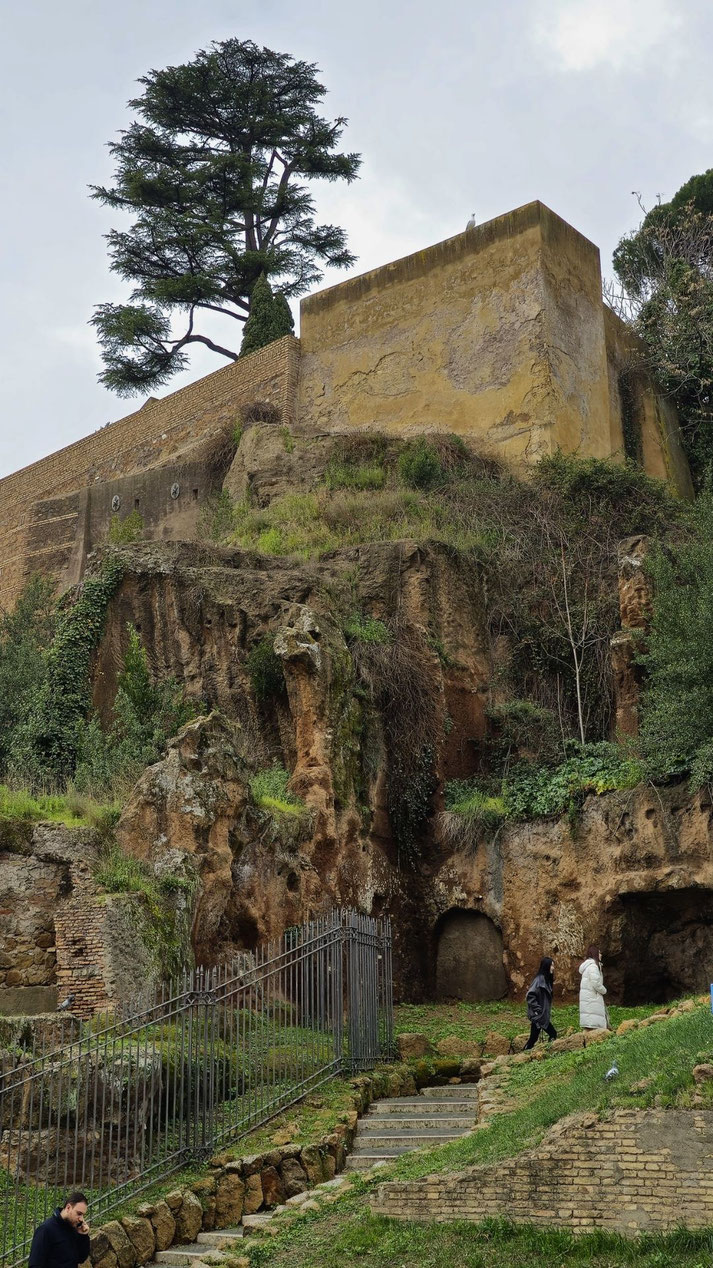How the Tarpeian Rock became the gruesome site of Ancient Rome's most brutal of punishments

The Tarpeian Rock, perched on the southern summit of Rome's Capitoline Hill, has long stood as a silent witness to some of the most tumultuous events in the ancient city's history.
To approach this steep cliff is to encounter Rome in its rawest form, a place where legend, law, and human fate intersected with uncompromising finality.
Named after Tarpeia, a Vestal Virgin accused of betraying her city to the Sabines, the rock has since its mythical inception been a place of execution.
It has served both as a warning against treachery and as the ultimate arbiter of the harshest form of Roman justice: capital punishment.
How the rock got its name...
The name "Tarpeian Rock" evokes an air of tragic grandeur, a fitting tribute to its dramatic origin story steeped in ancient Roman mythology.
The rock derives its name from Tarpeia, a Vestal Virgin who, according to legend, betrayed Rome.
The reason for her betrayal begins with a mythical event during the reign of Rom'es legendary founder and first king: Romulus.
Seeking to secure a future for his fledgling city, Romulus invited the neighboring Sabines to a festival, only to have his men abduct the Sabine women during the celebrations.
This event, infamously known as the "Rape of the Sabine Women," outraged the Sabine community and prompted them to wage war against Rome.
Led by their King Titus Tatius, the Sabines laid siege to the Roman citadel, setting in motion the chain of events that would ultimately involve Tarpeia.

During the siege, it was a time of peril and uncertainty, with both sides suffering from the stresses of war and the emotional weight of the kidnappings that had provoked it.
Romulus and his Romans were portrayed as audacious, eager to populate their new city, but also unscrupulous in their methods.
Titus Tatius and his Sabine warriors were on a quest for retribution and the reclaiming of their stolen daughters, wives, and sisters.
It was in this tense atmosphere that Tarpeia, stationed at the citadel, supposedly became enamored by the golden bracelets worn by the Sabine soldiers.
She promised to open the gates of the Roman citadel in exchange for "what the soldiers bore on their left arms."
The reasons of Tarpeia's choice to betray her city have been the subject of debate among scholars and storytellers alike.
Some suggest that she was driven by greed, beguiled by the golden ornaments of the Sabines.
Others propose that she may have been acting out of a sense of twisted justice, seeking to balance the scales for the Sabine women who had been stolen from their homes.
Regardless of her motivations, the outcome was undeniably tragic. True to her word, Tarpeia opened the citadel gates to the Sabine warriors, led by their king, Titus Tatius.
Yet, in a cruel twist of fate or perhaps poetic justice, she was not rewarded with the bracelets she coveted but was instead crushed to death under the weight of the soldiers' shields.
They took her vague wording—"what the soldiers bore on their left arms"—quite literally and heaped their shields upon her, killing her instantly.
It is said that her dead body was then buried in the rock, giving it its name.
The etymological roots of the name, entangled as they are with myth and memory, further illuminate the site's unique position in Roman cultural consciousness.
The term "Tarpeian" essentially serves as an adjective form of "Tarpeia," memorializing her in the most ominous way possible.
Yet, in doing so, it also accentuates the complex relationship between individual actions and collective memory.
In Roman lexicon, anything "Tarpeian" automatically alluded to a form of ultimate societal betrayal, invoking a historical cautionary tale with each utterance of the word.
How the Tarpeian Rock was used during the Republic
By the time the Roman monarchy had been overthrown and the Republic established in 509 BCE, the rock had already secured its place in the collective Roman psyche.
Its transformation from a mere geological feature into an institutionalized form of capital punishment revealed how deeply the notions of justice and retribution were embedded in Roman society.
Crimes such as treason, conspiracy against the state, and even perjury could warrant a sentence that involved being hurled from the Tarpeian Rock.
In essence, the rock was an extension of Roman law, a grim stage where sentences were not just pronounced but visibly executed for all to see.
The punitive aspect of the Tarpeian Rock was grounded in a blend of practical and symbolic considerations.
On a practical level, the public nature of the executions served as a deterrent, an unmistakable message to anyone who would contemplate betraying the Roman state.
Its position atop the Capitoline Hill, a political and religious hub, emphasized the gravity of the punishment.
The very act of being thrown from the rock represented a literal fall from grace, a plummet from the heights of Roman favor into disgrace and death.
The spectacle of this descent was not just a form of punishment for the convicted individual but also a ritualized reaffirmation of Roman societal values.
The most famous people thrown from the Tarpeian Rock
Over the years, a number of notable figures were executed at this grim locale, each case adding another layer to the rock's grim history.
One such case was that of Spurius Cassius Viscellinus, a Roman consul accused of aspiring to become a king— a heinous crime in a society that had overthrown its monarchy to establish a republic.
Spurius Cassius had proposed agrarian laws that were seen by some as a ploy to amass personal power.
The Senate deemed him a threat to the fledgling Republic, and he was sentenced to be hurled off the Tarpeian Rock in 485 BCE, barely a generation after the Republic's establishment.
His death was not just the end of one man but a statement about the kinds of threats the Roman Republic would not tolerate.
Then there's the story of Marcus Manlius Capitolinus, a hero turned traitor.
Initially celebrated for his valor in defending the Capitoline Hill from a Gaulish siege, Marcus Manlius later became too ambitious, trying to assert his own authority in a manner that was considered dangerous to the Roman state.
Accused of aspiring to tyranny, he was thrown off the Tarpeian Rock in 384 BCE.
His execution showcased the intricate relationship between heroism and hubris, valor and vanity, in the Roman psyche.
It was an uncomfortable reminder that even Rome's heroes could become its enemies, and it added another complex layer to the Tarpeian Rock's already multifaceted symbolism.
One cannot discuss the Tarpeian Rock without acknowledging that the victims were not always men or traitors.
In some instances, women found themselves facing this grim punishment, often for crimes that involved betrayal of a different kind— sexual infidelity or impiety.
Vestal Virgins who broke their vows of chastity, for example, were sometimes executed at the Tarpeian Rock, their deaths serving as a stark warning to others about the severe consequences of breaking social and religious taboos.
What do you need help with?
Download ready-to-use digital learning resources
Copyright © History Skills 2014-2024.
Contact via email
With the exception of links to external sites, some historical sources and extracts from specific publications, all content on this website is copyrighted by History Skills. This content may not be copied, republished or redistributed without written permission from the website creator. Please use the Contact page to obtain relevant permission.





